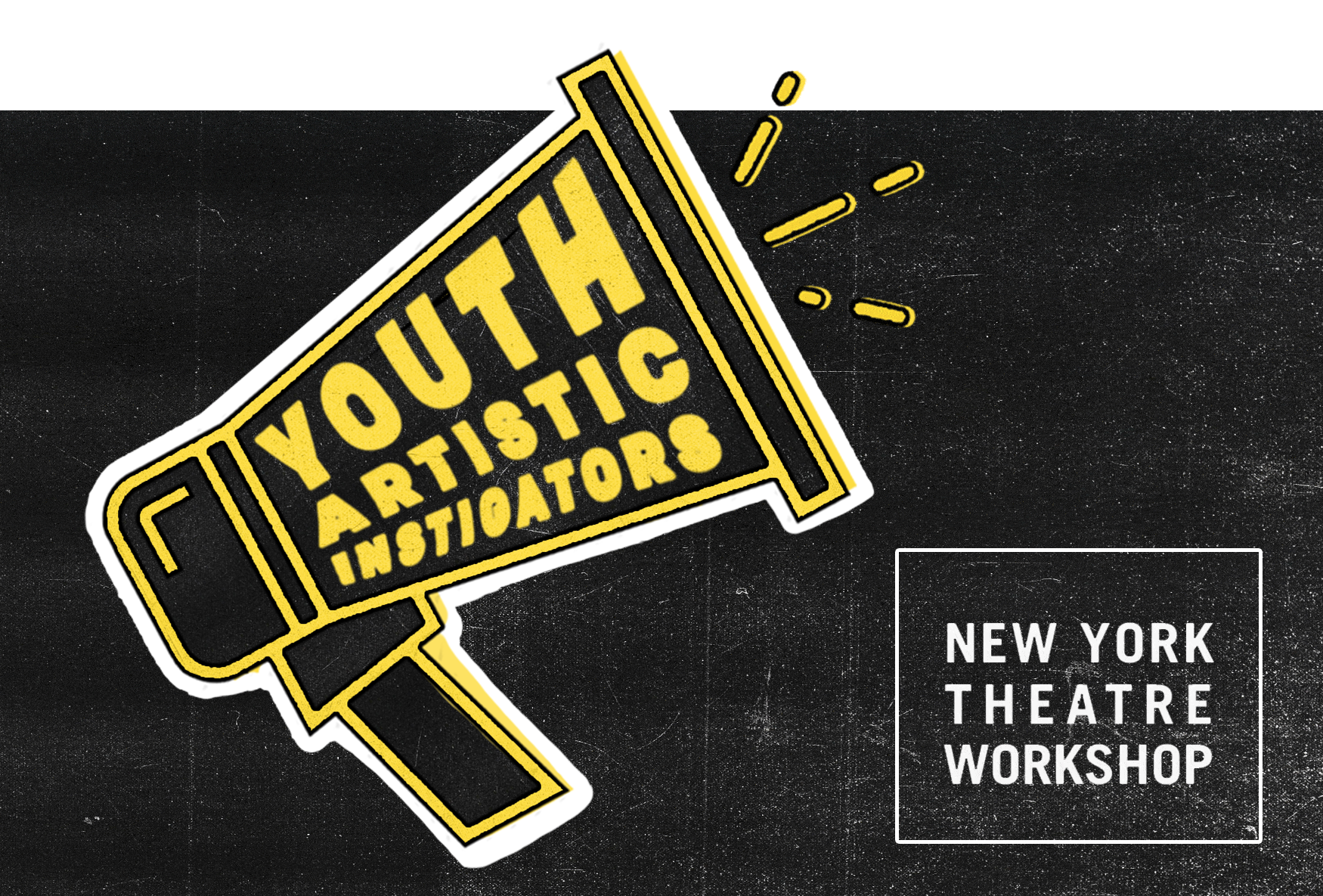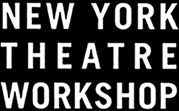

One of the most exciting aspects of being an Administrative Fellow here at the Workshop is being able to witness all of the unique and diverse programming that goes on throughout the year. After shadowing the Youth Artistic Instigators program, it was not difficult to be blown away by the entire experience. Students were not only expected to engage with challenging and timely materials, but they were also expected to collaborate with each other in a space that gave them complete freedom to create bold activist theatre. It was then, after my short time shadowing the program, that I reached out to the fantastic teaching artists who facilitate the program sessions to ask them how were they intentionally approaching teaching artistry in this hybrid era.
Below is my conversation with former 2050 Directing Fellow/Teaching Artist Nana Dakin, Education & Engagement Fellow Nia Smith, and Education Associate Psacoya Guinn:
How long have you been a teaching artist and can you talk more about your past experience that led you to teaching artistry?
Psacoya: I studied Theatre Education in college. I knew early on that I wanted to facilitate theatre for students while working as an actor. I think that is something lacking in theatre education–theatre teachers who are actively working in their field. I’m extremely proud to say I supported myself through my work as an actor and teaching artist in NYC before joining NYTW fulltime.
Nana: I feel like I’ve been a teaching artist since high school. When I was taking theatre classes in high school, I was also doing theatre outreach at that time where I collaborated with a group of my peers to work with developmentally disabled kids and create theatre work with them. So, it’s been an ongoing and part of my theatre work from jump you could say.
Nia: I’ve been teaching for about seven years now. I think that there are a number of “starting points” for me, but the earliest “teaching artistry” I can remember is when I taught all of my siblings musical numbers as a kid.
What are the differences between being a teaching artist working in an in-person setting versus a virtual one?
Psacoya: There are pros and cons to both. In-person facilitation allows an advantage for creating an ensemble that a virtual setting can’t offer. However, we are able to expand our reach through virtual facilitation. We currently have student from Mississippi, Connecticut, Jersey, Florida and even China in Youth Artistic Instigators. The virtual component allows us to reach those students which I think is awesome.
Nana: A lot of it is learning how to feel the energy of the students. With Youth Artistic Instigators, for the most part, they’ve been pretty good with turning their camera on; however, it is really hard to feel like you’re relating to someone when you are just seeing a blank box with a name on it, even if they’re responding in the chat. That’s a huge difference between being in the room and being able to see their behavior, read their energy, and using that to draw them in. During the first year we knew a lot of the students were working online, so it was figuring out how do we strike a balance between feeling like we want to empower students to take care of themselves and be off-screen, while also finding a way to create a sense of energy and community in a virtual setting which feels much more tangible when you’re in person.
Nia: I have really grown to love working in a virtual setting because I think it challenges students to think outside the box– it’s a lot harder to execute a fight scene on Zoom than in person! However, despite its challenges, I get really excited about the creativity that remote teaching breeds.
How do you think your students are responding to the hybrid setting? Do you notice a difference in how receptive the students are to the art/theatre that they’re creating?
Psacoya: We’re in a weird time. I think it’s obvious the students are over Zoom, as am I. However, we are still able to create great work virtually. The first time Nana gave them a few minutes to devise then share, I was blown away. The work they created was great, and also their use of technology with voiceovers and virtual backgrounds made the work even more impressive.
Nana: Something that I’ve noticed, which is different between this year’s group and last year’s group, is that there are more quiet students this year. There are some students who feel really comfortable sharing their thoughts if there’s an open question, but a lot of times I’ll ask a question and it’ll just be silence. Or sometimes I’ll ask a question and I’ll have to wait to see if they’re typing and try to be patient to see if there is a response coming … In this setting, the thing I’ve found that helps them is to put them in breakout rooms so that they can be together. There’s leap of faith that has to happen on my part, on the part of the people holding the space, which is we’re going to let them go into their own breakout room and trust that that is going to be the thing that enables them to open up and communicate with one another in a way that they wouldn’t do in the main room.
Nia: Listen. Remote learning isn’t for everyone, and I think we’ve really seen that exemplified in the past two school years. That being said, I believe that for students who are interested in engaging with theater in a different way, hybrid classes can be really exciting. There is so much opportunity for discovery when learning a new art form, and I think that for a lot of us, virtual theater is still a pretty new art form.
How does the work you do in Youth Artistic Instigators bounce off the art you do in your free time?
Psacoya: I really love Shakespeare. I perform predominately Shakespeare and classical text. One of my favorite lines of Shakespeare is from King Lear which says, “Expose thyself to feel what wretches feel.” It is basically asking us to have empathy, and empathy is such a huge component in advocating for social justice. Advocating for others isn’t some trendy new idea–it’s all throughout Shakespeare’s work.
Nana: The through line for me has to do with empowerment and creating space for meaningful engagement and transformation. In every artistic project that I do, regardless of what genre it is, the thing that I’m always looking for is how to engage everyone in that project in a mutual lane of curiosity. Similarly, with the work I’m doing with Youth Artistic Instigators, it’s about trying to bring their [the students] curiosity to light and trying to empower them to feel that the things that they’re curious about and interested in are meaningful.
Nia: Youth Artistic Instigators is such an inspiring class because the students are truly pretty brilliant. I think that oftentimes, teenagers are written off as being dramatic, or over-sensitive, and that is a hard stereotype to have to combat. In YAI, the students get a really special opportunity to hold their opinions closely and staunchly in a group that cares. Since the beginning of time, it feels like there is some sort of intergenerational passion, angst, and yearning to be taken seriously that teens share. The incredible thing about these students is their ability and willingness to articulate those feelings. The work that they do really makes me consider how I represent the teens and adults in my own work.
How does the hybrid model benefit teaching artistry?
Psacoya: Like I said before, we are able to expand our reach through virtual facilitation. We currently have students in Mississippi, Connecticut, Jersey, Florida and even China in Youth Artistic Instigators. Without this virtual program we wouldn’t be able to reach these students.
Nana: I think the biggest benefit, with this program in particular, is that students get to meet people from different schools. This year we have more students who are New York based, but the fact that they’re collaborating with students in different schools that they otherwise wouldn’t have met is exciting. It’s even more exciting if they’re collaborating with people in Jacksonville, Mississippi, and are able to bring very different perspectives [to the program] and share those perspectives about the locations that they’re in and what their schools are like.
Nia: I think that teaching in a remote model has been super challenging, and in the same way that it pushes students to find innovative solutions, it makes me think more creatively about how to engage with them. I have to find new ways to teach, after having developed pretty specific techniques over the past few years. The remote landscape almost establishes a blank slate for teaching artistry, and while tricky, it’s nice to tap into that creativity!
Is there a story/narrative from a student that stuck with you over the last semester of YAI that will you take with you?
Psacoya: During the class before Thanksgiving, one of the students came up with a really cool writing idea focusing on the future of American theatre from the perspective of a future theatre leader and it really stuck with me. It made me think about what examples are we setting for young artists, and ask will theatre continue to break down barriers and become less elitist and more inclusive? Hearing her pitch this idea just struck something in me. I want to make the future better for those coming behind me.
Nana: …The moments that are most meaningful to me are when I see a student step into their light in a way. That happened just last class when a student, who suddenly in a scene, really took on the character that they were playing … Previously they were a little bit flat, mostly because they seemed focused on the words and I could just feel them holding back, but then I saw this moment where they just released themselves. Also, seeing the progression of the peer leaders who have joined us for a second year, and seeing their growth in how much blunter they are. That’s the thing that continues to be moving for me, watching students become more grounded in who they are and feeling like they have a space where they can let that be seen.
Nia: I don’t have a specific narrative, so much as lines of dialogue that they’ve created that I think I’ll remember for a long time. I think so much of this work deserves to be heard on a larger scale, and is really, truly impactful to an audience of all ages.
The Youth Artistic Instigators will have their Final Presentation on December 13th 7pm EST via Zoom. Click here to RSVP!
Explore more
Categories: Education. Tags: NYTW Staff.

 My Cart
My Cart My Account
My Account Gift Certificates
Gift Certificates Find Us
Find Us




